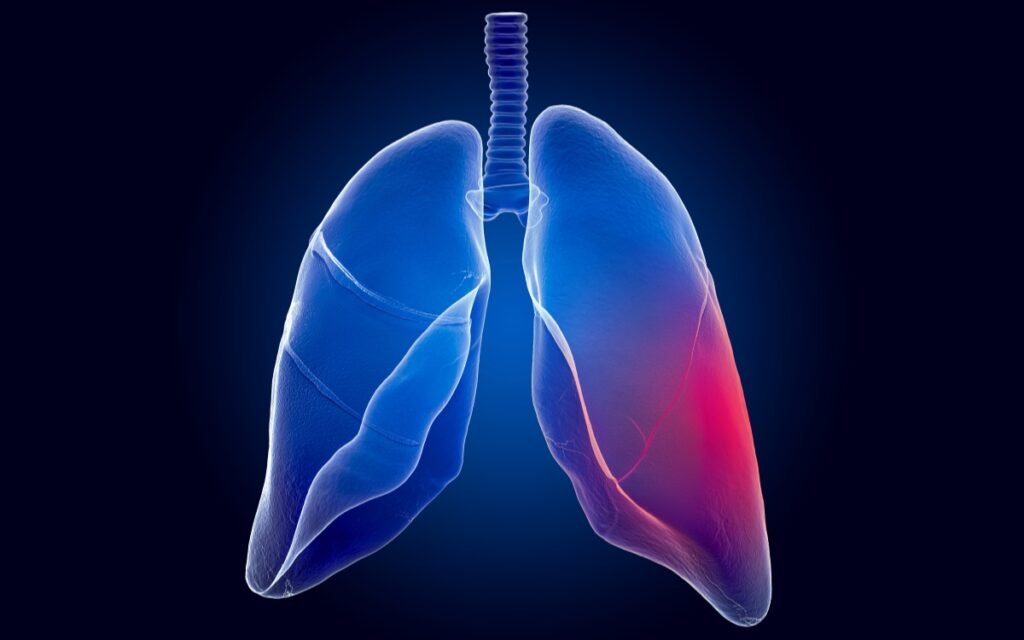ESMO: LBA68
EGFR mutations are found in 10%-15% of non-small cell lung cancer (NSCLC) cases among European and Caucasian populations. In contrast, the prevalence is significantly higher in Asian nations, with approximately 40%-50% of Asian NSCLC patients having EGFR mutations at the time of diagnosis. The primary standard of care for this subgroup of patients is the use of EGFR inhibitors, and TAGRISSO is the sole targeted therapy that has demonstrated improved survival outcomes for both early and advanced stages of EGFR-mutated NSCLC.
Tagrisso has received approval as a standalone treatment in more than 100 countries, including major regions like the United States, European Union, and Japan. These approvals encompass its use as a first-line treatment for patients with locally advanced or metastatic EGFR-mutated NSCLC, as demonstrated in the FLAURA trial. Additionally, it is approved for locally advanced or metastatic EGFR T790M mutation-positive NSCLC and as an adjuvant treatment for early-stage EGFR-mutated NSCLC (stages IB, II, and IIIA) following the positive results of the ADAURA trial, which showed a significant and meaningful overall survival advantage.
AstraZeneca is currently conducting the FLAURA2 Phase III trial, which is investigating the combination of osimertinib with chemotherapy.
Recently at WCLC 2023, AstraZeneca presented FLAURA2 study data. As per the results Tagrisso-Chemo combo delays EGFR NSCLC progression by 9 months in first-line. Now in ESMO 2023, the FLAURA2 trial results indicate that patients who received the combination of osimertinib and chemotherapy had a lower estimated risk (9%) of developing central nervous system (CNS) lesions at the 24-month mark, with a confidence interval (CI) ranging from 4% to 16%. In contrast, those who received osimertinib as a monotherapy had a higher estimated risk of 23% (with a 95% CI between 14% and 33%) for developing CNS lesions.
Furthermore, when compared to osimertinib alone, the addition of chemotherapy to the EGFR tyrosine kinase inhibitor (TKI) resulted in a significantly improved CNS objective response rate (ORR) and a higher rate of complete responses (CR). These responses were sustained over time, and the safety profile was found to be manageable and well-tolerated.
Conclusion
In the rapidly evolving landscape of non-small cell lung cancer (NSCLC), biomarker-driven therapies have become increasingly significant. EGFR-mutated NSCLC is one such biomarker segment that has witnessed remarkable advances, with blockbuster drugs like Tagrisso dominating the market and generating nearly $5.4 billion in sales in 2022. However, the prevalence of resistance mutations has grown as Tagrisso gained authorization for first-line use, creating a notable unmet need in the post-Tagrisso treatment setting.
Potential competition for Tagrisso comes from Rybrevant, which is actively exploring the use of lazertinib, a third-generation EGFR inhibitor, through trials like MARIPOSA, MARIPOSA-2, and CHRYSALIS-2. These investigations aim to access a broader patient cohort with EGFR mutations. Rybrevant is also conducting a series of PALOMA studies, utilizing a subcutaneous formulation in combination with lazertinib to tap into a larger pool of EGFR-mutated NSCLC patients.
While Rybrevant shows promise in expanding its reach, it remains a challenge to surpass Tagrisso’s well-established position in the market. The competition in this biomarker-driven field reflects the continuous pursuit of improved treatments and better outcomes for patients with EGFR-mutated NSCLC, offering hope for further advancements in the future.





























